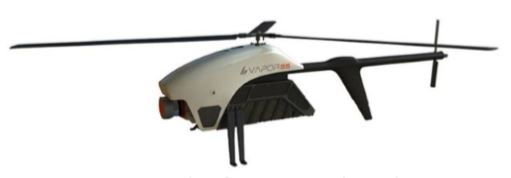Presented By: Nat Nagy, Executive Director Transport Safety Australian Transport Safety Bureau (ATSB) during the ISASI Annual Seminar, October, 2018 in Dubai, United Arab Emirates.
__________________________________
The transport sector is changing at a rapid rate. More passengers are flying today than ever before and when they board an aircraft, it is increasingly likely to be one designed with advanced automation, state-of-the-art technology and digital connectivity.
This kind of ‘disruptive technology’ challenges not only the aviation industry, but safety investigators in all modes of transport. There are complex and critical questions in relation to how safety investigation agencies are anticipating and preparing for these challenges.
How do we anticipate the types of hazards and risks that are likely to be contributing factors to a serious incident or accident in the near future?
We need to better utilise data to become more predictive. We also need to understand what an investigation organisation will look like in the future.
What are the skill sets we should be recruiting as investigators? Should we continue to recruit pilots as investigators, or should we be looking wider at systems engineers or data coders?
In this paper, the ATSB outlines the work it is doing to be future ready. The ATSB recognises accident investigation methodology as applied by today’s investigators won’t necessarily meet States’ expectations in 5, 10 and 20 years’ time.
When examining the aviation operating environment, the ATSB considers the kind of expertise we will need, the type and amount of data we will need to store and analyse to become more predictive, and how we will communicate critical safety issues to the industry, regulators and the public. The ATSB will evolve, as all accident investigation agencies must, to continue to be a relevant and integral part of the safety system, identifying the safety issues of tomorrow.
Since the inception of manned flight, aviation has been a dynamic mode of transport – continually evolving to become safer, to carry a greater number of passengers and heavier tonnage of cargo, to become environmentally cleaner and more efficient. For example, the flight data recorder, invented by David Warren AO, transformed aviation accident investigations when it was first introduced in the 1950s, and over the decades since, its design has evolved to be more durable and collect more data over longer periods.
Flight data recorders today have four times the capacity of the original magnetic tape flight recorders; they can survive high intensity flame for more than 30 minutes, can operate even after water immersion for 30 days at pressures equivalent to a depth of 20,000 feet. These and other changes are significant and they help us do our work to improve transport safety and ultimately save lives.
Many of the safety changes and improvements are a testament to the work of dedicated accident investigators such as those in ISASI. The ATSB’s investigation into a 2010 incident – an in-flight uncontained engine failure on an Airbus A380-824 – found that a number of oil feed stub pipes were manufactured with thin wall sections that did not conform to the design specifications. The investigation led to a number of relatively small but significant changes: identification and replacement or management of non-conforming oil feed stub pipes, an engine control software update and changes to the engine manufacturer’s quality management system(1).
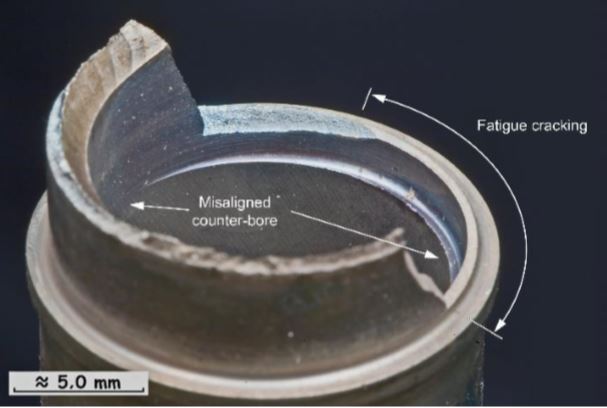
Figure 1: AO-2010-089 Oil feed pipe
More recently, in the course of our assistance to the Malaysian Ministry of Transport in support of the missing Malaysia Airlines flight MH370, the ATSB recommended that States ensure that sufficient mechanisms are in place to ensure a rapid detection of, and appropriate response to, the loss of aircraft position or contact throughout all areas of operation. The ATSB also recommended that aircraft operators, aircraft manufacturers, and aircraft equipment manufacturers investigate ways to provide high-rate and/or automatically triggered global position tracking in existing and future fleets(2). States and industry are taking action to respond to these recommendations.
Change is the only constant in the aviation industry and not new to this group or to any aviation investigation agency – it is central to what we do. But we can ill-afford to be complacent about the future. As leaders in aviation safety, we must predict the challenges ahead to ensure we remain relevant and continue to improve safety.
The changes of the past, while significant, have largely been gradual and iterative. What we are seeing now, across many sectors, is a shift towards more sudden, disruptive change. ‘Disruptive innovation’ is the buzzword of our generation , and
for good reason. Innovations such as the ‘sharing economy’ (think Uber and Airbnb) are disruptive in that they are transforming the way people utilise resources. This isn’t limited to holiday and personal travel – there are a number of share economy businesses in the aviation sector (or seeking to enter it) including Uber Elevate, Airpooler and Uberjets. These companies are innovating quickly and are fundamentally changing the way the aviation sector operates. Traditional aviation companies and regulators are finding it challenging to keep up with these changes while potential customers are changing their activities to adjust. These and other disruptive innovations will influence the world and the future of aviation safety.
We need to prepare for increasingly unfamiliar environments with disruptive innovation – a rapidly changing transport environment. The ATSB is preparing for the future by preparing a vision for 2025. Our vision is “to drive safety action in a rapidly changing transport environment.”
In this paper, I will provide examples of the key changes and trends we see emerging that demonstrate why we expect the future to rapidly change. I will also pose some challenging questions we should all be asking ourselves, and outline what the ATSB is doing to try to answer those questions.
The future of aviation
Automation
Automation is not new to the aviation sector. Autopilots have been used for decades and even technologies such as ADS-C and terrestrial ADS-B have now been in use for some time across the globe. However, automation continues to advance and is no longer confined to the biggest, latest, state-of-the-art aircraft, airports and other aviation systems. We’re seeing the effects of increased automation throughout the aviation sector now. This year the ATSB released two investigation reports identifying pilot interaction with automated technology as a contributing factor to the accident.
In the first incident(3), two Beech Aircraft Corp B200 aircraft were involved in a near collision. Difficulties in operating the GPS/autopilot resulted in the pilot of one of the aircraft experiencing an unexpected reduction in the level of supporting flight automation, and a significant increase in workload, while attempting to conduct RNAV (GNSS) approaches into the airport. This increased workload affected both the pilot’s ability to follow established tracks such as the published approach and missed approach, and his ability to communicate his position accurately to other aircraft and the air traffic controller.
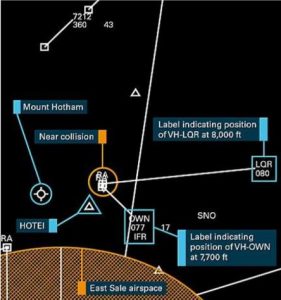
Figure 2: AO-2015-108 Radar data showing near collision
In the second incident(4), a Cessna 172 collided with terrain with fatal injuries to the pilot. Our investigation found that the aircraft impacted terrain in a level, slight right-wing low attitude. That indicated that the pilot likely stopped the aircraft’s descent and started to initiate a manoeuvre to avoid the terrain. It is likely that the pilot manually manipulated the controls while the autopilot was engaged in a vertical mode. As a consequence, the autopilot re-trimmed the aircraft against pilot inputs, inducing a nose-down mistrim situation, which led to a rapid descent. The aircraft’s low operating height above the ground, due to the extent and base of the cloud, along with rising terrain in front of the aircraft, provided the pilot with insufficient time to diagnose, react, and recover before the ground impact.
There was no advice, limitation, or warning in the aircraft pilot operating handbook or avionics manual to indicate that if a force is applied to control column while the autopilot is engaged, that the aircraft’s autopilot system will trim against the control column force, and possibly lead to a significant out of trim situation.
Training requirements for autopilot systems was rudimentary at the recreational pilot licence (RPL) level due to stipulated operational limitations for its use. At the time of the accident there was no regulatory requirement for pilots to demonstrate autopilot competency at the RPL level.
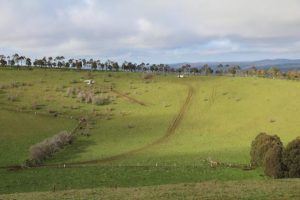
Figure 3: AO-2015-105 Accident site
Both accidents demonstrate that pilots need to have a thorough understanding of all systems on board their aircraft and have the skill to provide redundancy when those systems fail or their performance is degraded.
Aircraft manufacturer plans and industry demand suggests that automation is likely to continue to advance throughout the aviation sector. This increases the likelihood of systemic factors related to the design and operation of automated systems arising. The challenge for investigators will be ensuring we can and do identify those factors. We will need the appropriate tools and expertise. As the level of automation increases, our investigation of human factors may shift from the capability of the pilot to the person who coded the system that operates the aircraft.
Big data and complex systems
Many systems in the aviation sector, be they for manufacturing, maintenance scheduling, navigation or all manner of other things, are increasingly relying on complex digital codes and algorithms. Other transport modes are experiencing this same trend and as a multi-modal investigation agency, the ATSB is able to share safety lessons and experiences from these other sectors.
In a recent rail investigation(5), the ATSB determined that the computer system controlling movements of rail tracks was not operating as expected due to design errors in the system’s coding. Track maintenance workers were put at risk because the safety control they expected to be in place was not actioned. We identified a safety message – it is critical that system designers ensure that the functionality and performance requirements needed to meet all operational scenarios are incorporated within the design. It is also important that effective check and test processes are developed to fully validate system functionality. This is an important message for all transport modes including aviation, as systems become more technically complex.
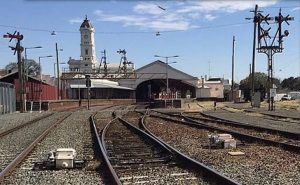
Figure 4: Ballarat Railway Station
Associated with the emergence of complex systems, is the creation of ‘big data’. Ninety per cent of digital data was created over the two years 2014 and 2015 and the rate of data creation is increasing(6). Transport systems, including aviation, are generating high volumes of data relating to routes, fuel efficiency, customer interactions, and maintenance. By collecting accurate, rapid and comprehensive information, the aviation sector can improve productivity and efficiency.
Remotely piloted technology
Another emerging technology is remotely piloted aircraft systems (RPAS). The ATSB is closely monitoring the growth in this sector as it presents an emerging and insufficiently understood transport safety risk.
Data about the number of RPAS operating in Australia is limited. Australia’s civil aviation regulator certifies RPAS operators but not all RPAS need to be certified. To estimate the total number of RPAS, we combine the regulator’s data with Google
trends shopping data. We use this estimate to help predict occurrences.
Data about occurrences such as collisions and near-encounters is somewhat better. The ATSB receives occurrence reports from a wide range of aviation stakeholders. At the time of writing this paper, the ATSB has received many reports about RPAS occurrences but no reports of collisions between RPAS and manned aircraft in Australia (7). Over half of all RPAS occurrences from January 2012 to June 2017 involved near encounters with manned aircraft. The next most common type of occurrence involved collisions with terrain, almost half of which resulted from a loss of control of the RPAS.

Figure 5: An example of an RPAS – the Pulse Aerospace Vapor 55
A key challenge for investigation agencies regarding RPAS is collecting and analysing data that will help us predict future occurrences. As data about RPAS is difficult to collect, this could be an opportunity for agencies to cooperate and share data internationally to form a more complete picture.
What next?
Now that we’ve given some thought to what our future looks like, we need to ask ourselves some difficult questions such as:
What is the ATSB doing?
What is the ATSB doing? This year the ATSB has embarked on a major project to challenge ourselves to ensure we are prepared for the future. We have chosen to focus on the medium term and what our vision is for 2025. This vision will be a declaration of our intended purpose and aspirations. It will guide our strategies over the coming years, help us communicate with our stakeholders about our purpose and value, and allow us to check if we are on track for achieving what we intend.
An important part of this process has been entering into conversations with a wide variety of stakeholders. We are talking to our staff – experts in their fields – about what they see as the emerging opportunities and challenges. We are talking to our government colleagues – policy makers, regulators and others – about how to best work together to improve safety. We are talking to people in the transport industry about how the ATSB can best add value and support the work they already do.
We are talking to the Minister about what he and the Australian Government expect from our agency. By asking and listening we have learned a great deal and their input has been integral to developing our vision.
Our vision is “to drive safety action in a rapidly changing transport environment.” This acknowledges the fast pace of change and our important role in identifying safety issues and influencing improvements. As with all vision statements, it is an aspirational target, supported by goals and strategies. These goals and strategies centre on ensuring the ATSB remains relevant and uses resources in the best way to achieve safety improvements.
One of our aspirational goals is to be Australia’s national transport safety investigator. As we are a multimodal investigation agency, covering aviation, marine and rail, you could argue that we have already achieved this goal. However we need to strategically consider where we can best add value to the transport sector.
We currently focus on passenger transport across these three modes, but our expertise could potentially also assist in protecting economic interests by focusing on freight movements and damage to public infrastructure. We could potentially also lend our expertise to other transport modes such as heavy vehicles. For example, a recent accident north of Sydney involved a truck and six cars and resulted in two fatalities and multiple injuries(8).
This stretch of road is has been the site of several serious accidents and an investigation into the accident could potentially identify some systemic contributing factors. The investigation techniques and expertise are largely transferable and could lead to improvements in road safety and a reduction in fatalities.
While these options require extensive consideration by the agency and the government, we are committed to think more strategically about what our role as Australia’s national transport safety investigator does and should mean, especially in the context of future change.
Another goal for 2025 is to expose the critical safety issues that others don’t. There are many relevant stakeholders in each of our modes – including industry operators, private operators, regulators, policy owners, research bodies, police and coroners. All of these stakeholders have some interest in improving safety and take action to identify issues and take action.
Many of them have investigation capabilities and can identify safety issues in minor and routine occurrences. If they do this work, there may be no need for the ATSB to be involved. Replicating the work of these stakeholders would be inefficient and unlikely to lead to further safety improvements. Instead, we should use our position as the independent no-blame investigator to investigate and research those issues that others can’t or won’t. We are in a unique position to raise the standard of investigations, conduct detailed technical work and advocate for serious systemic change.
For example, the ATSB investigated a collision with terrain involving a Robinson R44 helicopter(9). We also conducted statistical analysis of helicopter accidents that occurred in Australia and the United States between 1993 and 2013 and identified a significantly higher proportion of post impact fires involving R44s than for other similar helicopter types.
That analysis also identified that, despite the introduction of requirements for newly certificated helicopters to have an improved crashresistant fuel system (CRFS) some 20 years previously, several helicopter types were still being manufactured without a CRFS and that many of the existing civil helicopter fleet were similarly not fitted with a CRFS.
The ATSB issued a safety recommendation about the risks involved in not having a CRFS. As a result, Australia’s civil aviation regulator, and other international regulators, took action to ensure owners and operators made these improvements. The ATSB’s investigation and research led to safety improvements that otherwise would not have happened. This is the kind of work we should prioritise into the future.
Conclusion
Our collective future lies in a rapidly changing transport environment and the ATSB will continue to drive safety action. We have a great deal of research and strategic planning ahead to determine what our future direction should be, but the process so far has been fruitful and we are better placed to continue being an integral part of the safety system.
References
-
1 Australian Transport Safety Bureau, 2013, AO-2010-089, In-flight uncontained engine failure Airbus A380-842, VH-OQA, https://www.atsb.gov.au/publications/investigation_reports/2010/aair/ao2010-089.aspx
-
2 Australian Transport Safety Bureau, 2017, AE-2014-054 Aviation safety issues and actions: Aircraft tracking, http://www.atsb.gov.au/publications/investigation_reports/2014/aair/ae-2014-054/ae2014-054-si-02/
-
3 Australian Transport Safety Bureau, 2018, AO-2015-108, Near collision and operational event involving Beech Aircraft Corp B200, VH-OWN and VH-LQR, http://www.atsb.gov.au/publications/investigation_reports/2015/aair/ao-2015-108/
-
4 Australian Transport Safety Bureau, 2018, AO-2015-105, Collision with terrain involving Cessna Aircraft Company 172S, VH-ZEW, http://www.atsb.gov.au/publications/investigation_reports/2015/aair/ao-2015-105/
-
5 Australian Transport Safety Bureau, 2018, RO-2016-011, Signal control system irregularity, http://www.atsb.gov.au/publications/investigation_reports/2016/rair/ro-2016-011/
-
6 Department of Infrastructure and Regional Development, 2016, Trends: Transport and Australia’s development to 2040 and beyond, https://infrastructure.gov.au/infrastructure/publications/files/Trends_to_2040.pdf
-
7 Australian Transport Safety Bureau, 2017, AR-2017-016 A safety analysis of remotely piloted aircraft systems. http://www.atsb.gov.au/publications/2017/ar-2017-016/
-
8 Australian Broadcasting Corporation, 2018, M1 crash: Truck driver charged after two dead, five injured in fiery collision, http://www.abc.net.au/news/2018-08-01/m1-truck-crash-two-dead-drivercharged/10059828
-
9 Australian Transport Safety Bureau, 2015, AO-2013-055 Collision with terrain involving Robinson R44 helicopter, VH-HWQ, http://www.atsb.gov.au/publications/investigation_reports/2013/aair/ao2013-055/

